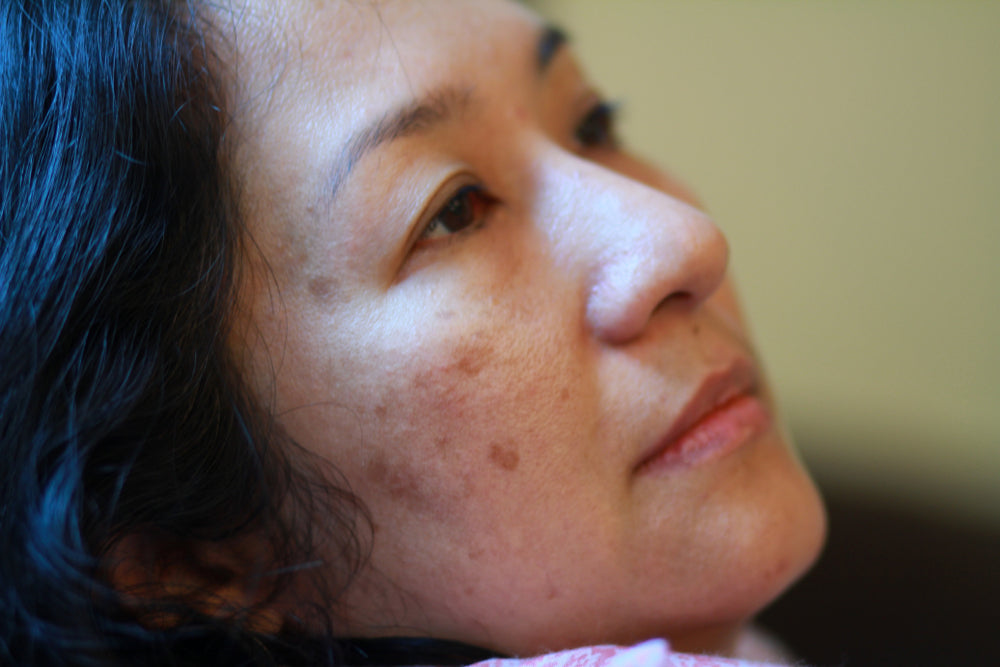
Tackling Skin Pigmentation 101
The key to tackling skin pigmentation is understanding it. Pigment, or hyperpigmentation, isn’t exactly one skin concern. Although physiologically, all hyperpigmentation is caused by an excess of melanin (our skin’s pigment) creating deposits in the skin, the cause of this excess of melanin could be a number of things.
Many of us know hyperpigmentation by the names of age spots, liver spots or sun spots. Did you know that these are all the same thing, being sun spots? Additionally, we see pigmentation at points of trauma to the skin and this is known as post-inflammatory hyperpigmentation, or PIH for short. The dark or red marks left behind after you’ve finally ousted a spot? That’s PIH.
Tips for tackling skin pigmentation
A very common approach is to exfoliate the living heck out of the skin, thus bringing existing pigment to the surface. This isn’t the nerdie way.
We believe in a multi-pronged approach when we tackle pigment, one that involves continuous protection from future pigment, too.
The nerdie way includes a combo of:
- Tyrosinase inhibitors
- Vitamin A
- SPF
- Exfoliation
Tyrosinase inhibitors
Tyrosinase is an enzyme that plays a role in the creation of pigment in the skin. Ingredients known as tyrosinase inhibitors stop it in its tracks, meaning that pigmentation is less likely to develop or worsen.
The common tyrosinase inhibitors that you’ll see in skincare are vitamin C, liquorice root extract, niacinamide (vitamin B3) and kojic acid, amongst others.
Most products labelled as brightening will be packed full of tyrosinase inhibitors, such as the Yon-Ka Creme White Creme Lumiere, which is 20% off on The Skin Nerd store for the month of February. The Creme Lumiere contains a highly stable and bioavailable (read: able to penetrate into the skin easily) form of vitamin C, vitamin A, vitamin E, plumping, hydrating hyaluronic acid and peptides.
Vitamin A
Vitamin A, as found in Environ SkinEssentiA AVST Moisturiser, can repair pigment in the skin, so it is vital in any routine that is geared towards getting rid of pigment. Getting vitamin A in from the inside is key too, such as through Advanced Nutrition Programme Skin Vit A+, as it assists in the maintenance of healthy skin
SPF
SPF is a given, considering that pigment is caused or made worse by exposure to UV light through sunlight, hence “sun spots”. This is one of many reasons that we say that you need to wear your SPF daily. UVA rays, the type that affect your skin all year round, come sun, rain or shine, contribute to pigmentation too, so you gotta stay vigilant. The main thing to ensure when it comes to the SPF that you use is that it has broad-spectrum protection, aka protection from both UVA and UVB.
Those that contain antioxidants and protection from HEV (blue light, emitted by computer and phone screens) may be worthwhile for those who really don’t want to give pigment any legs up.
Exfoliation
While we don’t believe in exfoliation alone when addressing pigment, we will admit that it can be very effective in some circumstances when used in conjunction with the other ingredients mentioned. Chemical exfoliation speeds up desquamation, or skin cell turnover, as non-nerds say. As our skin creates more skin cells, the pigmentation moves upwards through the layers - indeed, our skin does work like a cell conveyor belt - and eventually, will disappear.
If you get a chemical peel for pigment in a salon or clinic, the pigment may crust and flake off. With home care, you don’t see as dramatic of an effect. With continued exfoliation, the pigment may appear darker as there will be fewer layers of skin on top of it. That will be the extent of it!
When it comes to post-inflammatory hyperpigmentation, an exfoliating cleanser, such as one that contains glycolic or lactic acid like the IMAGE Ageless Total Facial Cleanser, will give you what you need.
However, if you are tackling pigmentation as a result of light exposure or hormones (melasma or chloasma), the addition of strong exfoliants will help in the short term, but may actually make the skin more sensitive to light in the long run, leading to more pigment. It’s a vicious circle, in this sense.
Many looking to oust pigment as quickly as possible turn to salon or clinical treatments, such as the aforementioned chemical peel or laser. Although a fantastic short term solution, they also can make the skin more sensitive to light, possibly causing more harm than good.
The IMAGE Iluma Intense Brightening Powder is a fabulous mild exfoliant for those with light or hormone related pigmentation, as it additionally contains tyrosinase inhibitors.
If you have developed pigmentation since your last consultation, or if you have any questions at all, do not hesitate to pop us an email at consult@theskinnerd.com or ring +353 1 5649362.



